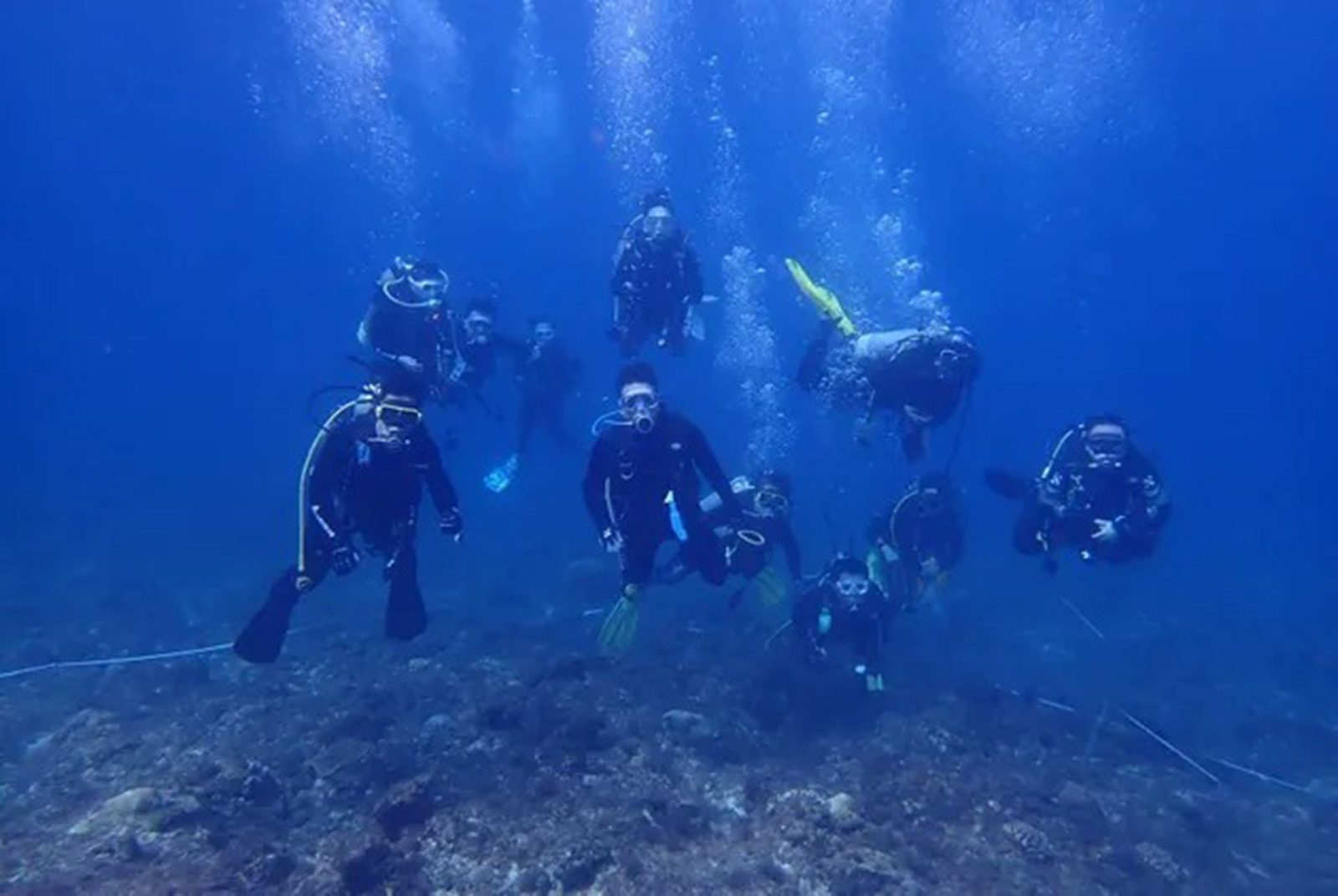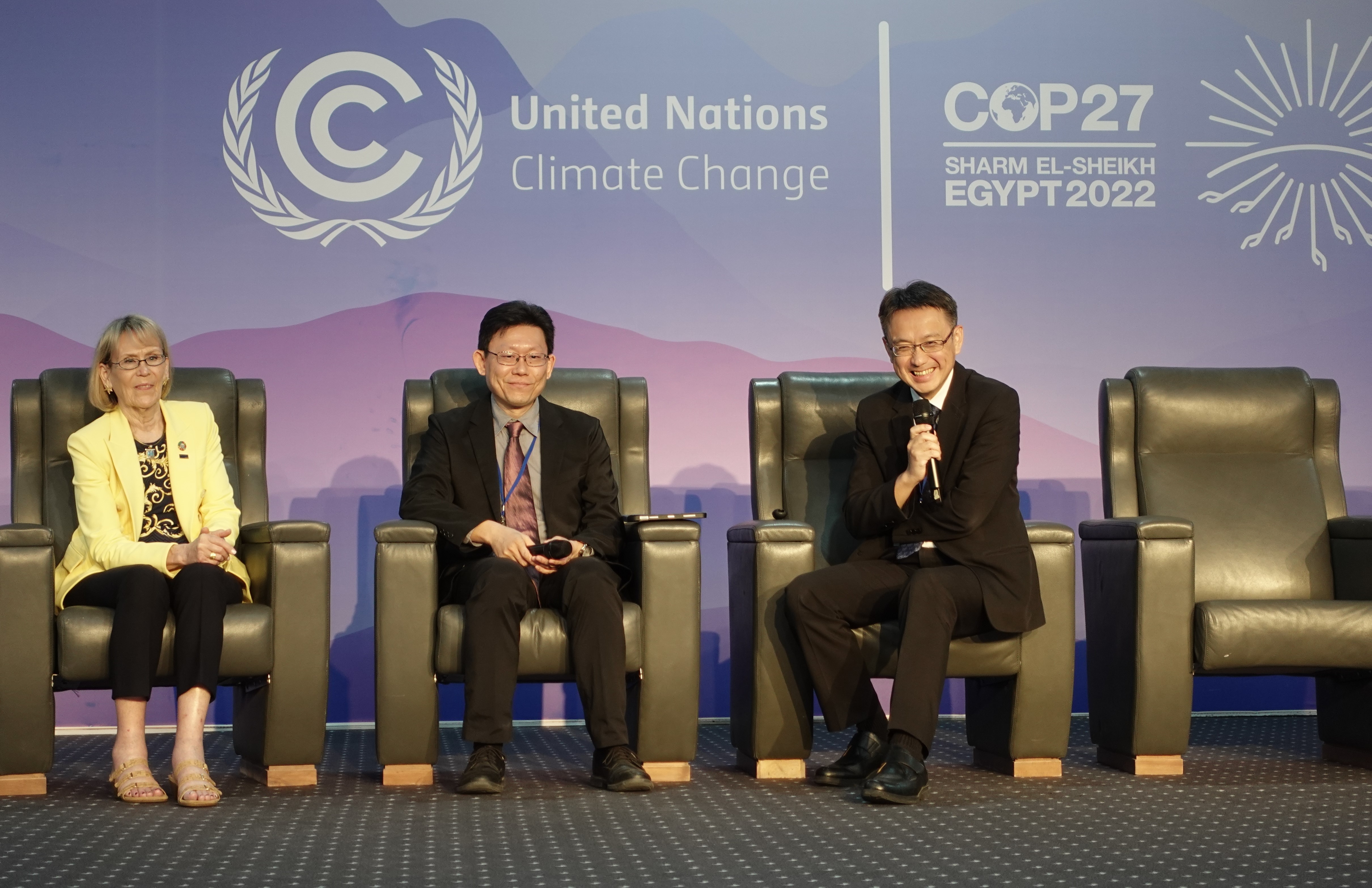How Delta Electronics revived a coral reef

Source:Delta Electronics
Delta Electronics has been at the forefront of the ESG movement in Taiwan and has now successfully rejuvenated a coral reef on Taiwan’s northern coast, an experience it will be sharing at COP 27 in Egypt in mid-November. Here’s how it did it.
Views
How Delta Electronics revived a coral reef
By Kaiyuan Teng, Jimmy Hsiungweb only
The waters along the coast of Chaojing Park just east of downtown Keelung are home to a colorful reef serving as a critical habitat for tropical fish.
Two years ago, this rich seafloor ecosystem was cracking under the stress of global warming, rising sea temperatures and excessive tourism, with 20-30 percent of its corals bleached.
“The El Nino and La Nina phenomena have intensified in recent years, and water temperature anomalies have grown worse,” said Chen Li-shu (陳麗淑), head of the National Museum of Marine Science & Technology’s Industry-Academia Partnership division.
To revive the damaged reef, Delta Electronics and the museum collaborated on first restoring corals artificially in a laboratory and then transplanting them in Chaojing Park, resulting in the expected restoration of nearly 1,000 corals by the end of this year.
“Only one one-thousandth of the planet’s seafloor has coral, but that coral is responsible for supporting a quarter of all marine ecosystems,” said Guo Shan-shan (郭珊珊), Delta Electronics’ chief brand officer and the vice chairperson of the Delta Electronics Foundation. She warned that the disappearance of coral would be catastrophic for the world’s seabeds.
Designing the ideal coral environment
Restoring coral reefs, however, is easier said than done, and customizing solutions to local conditions has been nearly impossible for the museum because it depends on overseas suppliers to acquire the light sources and environmental control equipment needed for the process. The collaboration with Delta Electronics has changed that.
“Delta Electronics engineers designed the perfect light and automated control system, and it has dramatically accelerated coral research and restoration,” Chen said.
 (Source: Delta Electronics)
(Source: Delta Electronics)
But how exactly did Delta Electronics, an automation and energy management specialist at its core, get involved with coral reefs?
“Our employees scuba dive at Houbihu Fishing Harbor [on the Hengchun Peninsula in southern Taiwan], and they were sad at seeing the bleaching of the coral reefs there. They sent photos to the Delta Electronics Foundation to study,” Delta’s Guo said.
“We found that biodiversity and coral restoration are important trends internationally and are linked to Delta’s technology, so we decided to jump in,” she recalled.
Delta Electronics has established itself as an ESG pioneer among Taiwanese companies. It has topped the CommonWealth Sustainable Citizenship rankings among large companies six times and been selected for 11 consecutive years to the Dow Jones Sustainability Indices top tier World Index.
The company has also dedicated itself to environmental education for many years and regularly attends the annual COP summit, bringing back the latest environmental knowledge to Taiwan, and it was the first company in Taiwan to pass a Science Based Targets Initiative (SBTi) compliance review.
Delta Electronics’ latest initiative reflects its commitment to marine biodiversity.
Chen Yao-teh (陳耀德), CEO of Tunghai University’s Corporate Sustainability Impact Center, said biodiversity was a new indicator added to the DJSI framework this year, with good reason.
“The impact of ecological restoration far surpasses that of companies simply cleaning beaches,” he said.
Hsu Huang-hsiung (許晃雄), a distinguished research fellow with Academia Sinica’s Research Center for Environmental Changes, said Delta Electronics has been able to absorb cutting-edge information from the international community as well as, if not better than, academia in Taiwan.
“Delta Electronics can translate and summarize the highlights of a United Nations climate report in one night, and they do a more thorough job than we do,” he said.
The company has taken that knowledge and turned it into results.
“We set a goal to reduce our carbon intensity by 56 percent by 2025, and we’ve already achieved it,” said Delta Electronics Chairman Yancey Hai (海英俊) at the CommonWealth Sustainable Citizenship awards ceremony in September, offering a peek into his company’s progress on decarbonization.
The “carbon intensity” metric mentioned by Hai measured the company’s electricity-generated carbon emissions per million U.S. dollars of revenue, and in 2021, it fell by 71 percent from the baseline.
Internal carbon pricing spurs climate technology investment
Delta Electronics’ advances on sustainability have been spurred by the company’s internal carbon pricing system.
Five years ago, the company required that every one of its business units pay internal carbon fees based on the amount of carbon emissions they generated. They currently pay US$300 per ton of carbon emissions, adding up to billions of Taiwan dollars per year across the company.
Those funds are then used by Delta Electronics to buy green energy or invest in critical carbon reduction and climate technologies of the future.
Jesse Chou (周志宏), the company’s chief sustainability officer, said that roughly 20-30 percent of the funds are used to purchase green energy while the rest is distributed to different departments to develop and finance sustainable innovation solutions.
In addition, investments are made in domestic and overseas sustainability-oriented, energy, and carbon reduction startups focused on such technologies as carbon capture and storage and green hydrogen.
Getting in early on new energy and carbon reduction technologies has resulted in benefits to the brand and new commercial opportunities.
The most obvious example has been Delta Electronics’ promotion of green buildings. It has installed new energy management solutions in its own factories since 2015 and often welcomes visitors to see what it has done. The company has acquired four overseas companies active in the green-building field and developed an independent green building and building automation unit.
Headed to COP 27
 (Source: Delta Electronics)
(Source: Delta Electronics)
Finding new solutions in response to environmental and climate challenges has also been a key feature of Delta Electronics’ ESG commitment.
“Academia can conduct excellent research in the climate and environmental fields, but Delta Electronics can help us turn ideas into practical technologies or opportunities and make them more impactful,” said Academia Sinica’s Hsu.
In the wake of the devastating Typhoon Morakot in 2009, for example, the company helped rebuild the elementary school in the Indigenous mountain town of Namasia in Kaohsiung using solar power, generators and water storage facilities so that it could serve as a community shelter in case of another disaster.
In the past two years, Delta Electronics has offered a similar helping hand to Kinmen Island and Orchid Island, building energy storage systems capable of overcoming power disruptions or gaps in the intermittent power generation of renewable sources and improving the resilience of the islands’ electricity supply.
These successes will be featured at this year’s COP 27. Guo, the company’s brand manager, said that at the COP 27 meeting in Egypt in mid-November, Delta Electronics and the Spanish government will collaborate on an exhibition showcasing this energy storage system.
“Spain also has many islands that are major tourist destinations,” she said. “We want to take Taiwan’s experience to the international market and let everyone know that Taiwan has energy management solutions that can stabilize an independent grid.”
Have you read?
- Taiwan’s first climate refugee
- How could garbage help Taiwan factories reduce emissions?
- Climate change throws Taiwan’s mackerel fishing into crisis
Translated by
Luke Sabatier
Uploaded by Ian Huang






